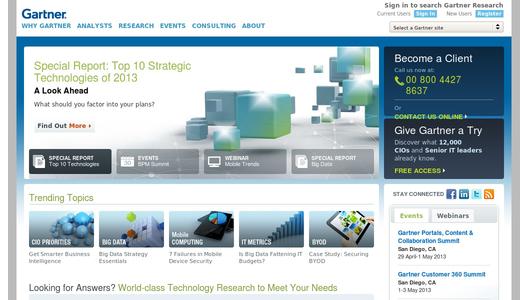"Exponential increases in demand for IT are a problem for all banks, particularly because IT budgets have failed to keep pace with demand. Big banks' internal economies of scale - which make them better able to absorb fixed overheads due to a larger customer base and stronger buying power - should give them an advantage over smaller banks," said David Furlonger, vice president and distinguished analyst at Gartner. "However, Gartner's data continues to show that these supposed economies of scale are actually being overwhelmed at big banks - typically those with annual revenue greater than $10 billion - by accelerating demand and complexity."
Gartner has identified the following key impacts on big banks and associated recommendations:
The increasing size and complexity of big banks is outstripping the ability of their CIOs to provide effective IT and operational support.
IT is more important to the intricately interconnected global economy than ever before. Everyone involved in business - from senior management to lower-level employees to customers and clients to business partners - expects to use new technologies for business purposes. The phenomena of rapidly escalating demand, limited IT scalability and diminishing returns on IT investments are especially prominent in heavily digitized industries such as banking and insurance. Their products are fundamentally intangible, and IT plays a primary role in virtually every aspect of operations.
"CIOs and COOs should address the impact of the law of diminishing IT returns in executive management steering committee meetings. Initial investments in IT efficiency require subsequent investments in superior delivery and management, such as more automation and self-service portals, visualisation and information-centric technologies, due to increased demand," said Peter Redshaw, managing vice president at Gartner. "They should also simplify wherever possible as many 'too big to fail' firms remain too complex to manage well. The focus should be on improving process simplification, standardisation, application portfolio rationalisation, data quality, openness and divestment."
Increasing digitalisation has created exponential growth in demand that exceeds the bank CIO's ability to supply IT cost-effectively.
CIOs and COOs are well aware of the extraordinary and constantly increasing demand for IT services. One of the most striking examples is the pervasive use of consumer-owned devices for business purposes. This is forcing enterprises worldwide to introduce bring your own device (BYOD) policies. The surge in IT demand, however, does not stop with BYOD. IT is now expected to support cloud-based applications, employee use of social media, connectivity with external business partners, and many other new demand-driven IT use cases, many of which are effectively beyond the control of the enterprise's IT and operations organisations.
"It is important to recognise that the IT organisation's resources cannot be expanded indefinitely to support never-ending increases in demand. CIOs must be able to identify high-priority projects that deliver real business value, and decline to support, or at least limit support to, other initiatives," said Mr Furlonger. "CIOs and COOs should change senior leaders' perceptions of the value of IT and operations and expand their view of return on investment to include "defined" business value. Deeper knowledge of, and visibility into, total cost of product design, manufacture and support will make it possible to identify profitable and unprofitable operations."
IT spending outside the bank CIO's control renders traditional management models obsolete.
Business units, from sales and marketing to manufacturing and logistics, now routinely make their own purchasing decisions about infrastructure, systems and applications. IT and operations must eventually implement and manage all IT assets and processes, but these costs are rarely taken into account in the evaluation, selection and purchasing process. Moreover, these costs will certainly increase due to the fragmentation of technologies and run-cost support mechanisms, such as security, data management and version control.
"Banks need to improve the governance model. CIOs must lobby senior executives at steering committee meetings to place greater emphasis on improving governance models, shared services and centres of excellence across product areas, using lower-cost locations, and outsourcing appropriate functions," said Mr Redshaw. "They should evaluate non-financial-services management models. In industries other than financial services, IT is no longer in the "back office," and this provides opportunities to learn from others. Enterprises such as Google, Facebook and Amazon provide valuable role models and a source of ongoing best practices for banks to learn from. Moreover, the internet is making collaboration easier, so best practices can be shared and disseminated more rapidly."
More detailed analysis is available in the report "Banks That Are 'Too Big to Fail' Are Also Too Big to Succeed." The report is available on Gartner's web site at http://www.gartner.com/....

